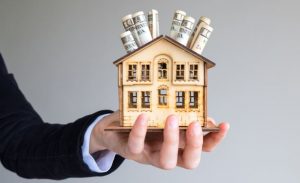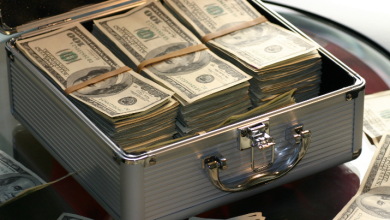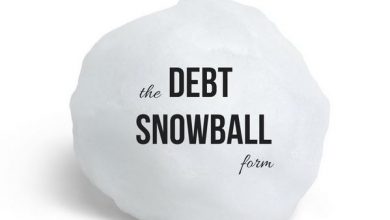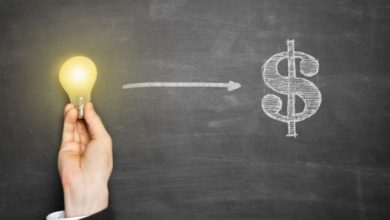HOW REAL ESTATE CAN MAKE YOU WEALTHY

Investment involves countless options: Which investment vehicle should I invest my money in? How much should I sit there? How long must I leave there? Before studying the details of investing in real estate and explaining how to enrich real estate, we should probably take a quick look at other options. Our idea is to set aside 10% of monthly income for long-term growth. We believe that in the long run, anyone can build a satisfactory retirement nest based on this strategy. Let us consider that you decide to follow this recommendation and set aside 10% of your income so that you can start building an investment plan yourself. In the long run, maybe you will start to deposit money in a money market account or open an IRA to increase your wealth. Either way, you have to take action; this is a good start. Assuming that for booking purposes, you can save $4,000, which is 10% of the first year’s money The total income is $40,000. In this case, you may be very satisfied with this, especially when this is the first time you have successfully activated your system’s savings plan. Also, suppose you accept another suggestion and then slap yourself in the face. We firmly believe in celebrating this success! Now, suppose you start thinking about using a new savings plan to earn a little extra money from your money so that you don’t always have to rely on salary alone to support yourself and your family. After a few calculations, you decide that if you can get an additional income of only $10,000 a year from your investment, it will be a good choice. Sounds reasonable, doesn’t it? The problem is: you are continuing to calculate, so a reasonable goal does not seem so acceptable. For example, that your money market fund pays 2% interest every year, and you estimate that you will have to earn $500,000 in interest every year. Thinking of myself it’s frustrating. And the stock market, do you know? A small study shows that the average annual return on the stock market is about 12%. I am feeling better now. You now only need a $83,000 egg to generate the desired value. An additional annual income of 10,000 US dollars. And, if you “marginalize” your funds in the stock market (up to 50%), you can get up to $41,500 in funds. Unfortunately, you also realize that with the current annual rate of $4,000, it would take 10 years of savings to reach the required $41,500, and obviously, you need to achieve an average annual return of 12%. We know from the experience of the past few years that the stock market does not always provide double-digit performance, and a recession can have serious consequences for those who trade on margin. If your analysis ends here, you will have many reasons to feel frustrated. But let us argue that you should not stop there. You need to continue the analysis and real estate gains. Because the real estate industry has things that other investment tools don’t, we call it OPM or the power of others’ money. Compared with all other types of investment, the advantage of real estate is that you can start investing without spending money. You don’t need money to use real estate. Somehow, the less money you have, the more money you can make. Let us return to our example. Assuming you can make 20% of the money, how long does it take to convert a $4,000 investment into a $1 million savings? Answer: 30 years. Now, what if you are not 30 years old? Do you have to give up (like many people) saying to yourself: “I am too old to make money”? What if you say to yourself: “I am only five years old?” You need to get 200% of the annual income, which is impossible on the money market account, but almost impossible on the stock market. What should you do? The answer is of course real estate. This is how. Suppose you bought a property for $50,000 and paid it all in cash.
(Don’t worry about the price; this is just an example.) Suppose the property is 10% in one year, or $5,000. Therefore, a cash investment of $50,000 is 10%, which is a considerable but not surprising return. However, suppose you don’t have $50,000. Instead, you only have US$5,000 was used to invest in the property. Then, you invest $5,000 and get a loan as the balance of the purchase price. The value of this house has still increased by 10%, but the original $5,000 investment now returns $5,000; in other words, you can get a 100% return on your money. This is a basic concept; if you did not follow it, try to run it again and then see the example below. Suppose you can only withdraw half of the advance payment, which is $2500, and then borrow the rest. If the same scheme is developed (10% valuation of the property within one year), you will get a 200% return on capital. Keep moving in this direction: what if you don’t invest? Your return is incredible. This is how wealth is generated through “leverage”. Use the power of other people’s money to take advantage of the benefits that usually flow to others. We will soon realize that this is a very simplified example. It does not take into account the loan interest you will pay, nor does it reflect the compensatory rent you might charge for the property. This example does not include capital investment or maintenance costs, nor does it consider the tax benefits of investing in real estate. However, this simplified illustration shows you how to enjoy and use OPM under appropriate circumstances. Do you need to assume debt to get these returns? If you can. But you are doing this to invest in what has traditionally been an important asset. There are risks involved, but most determined people decide that at some point they must take a certain risk to move forward. Similarly, if you are just starting out, it is recommended that you start with a single-family where you will live. Risky? Well, yes; writing these big checks at checkout is always a bit stressful. But your risk may be lower (some lower) because you have to pay to live anyway. See how the definition of “risk” changes based on your perspective? You should also remember that real estate debt is not the same as consumer debt. Most of the goods you buy with a credit card (and other similar consumer debt) are considered “useless assets” because they lose value from the date of purchase. Indeed, the value of some properties has also declined, but the percentage has increased year by year. The decline in property value usually stems from very special circumstances. The intention of this book is to help you avoid these problems.




